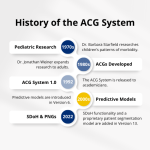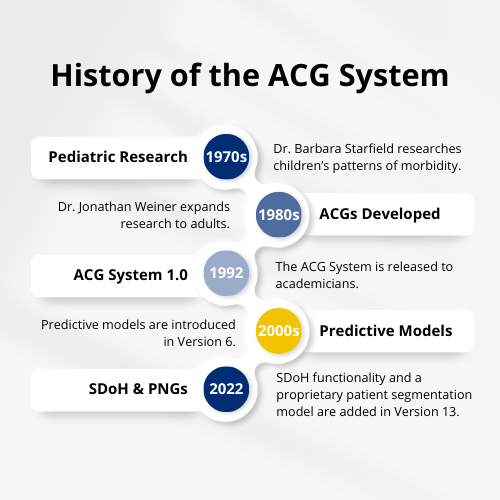

Within the ever-changing health care landscape, population health analytics has become increasingly important, transforming how we understand, manage and enhance public well-being. Population health analytics serves as a powerful tool, offering the ability to decipher patterns, identify trends and uncover actionable insights from vast datasets. This evolving field not only empowers health care professionals to make informed decisions at both the individual and community level, but also fosters a proactive approach to care delivery, emphasizing prevention and tailored interventions.
Although the adoption of population health analytics continues to rise, this is not a new concept. In fact, in the late 1970s, Johns Hopkins professor Dr. Barbara Starfield began researching patterns of children who were high utilizers of the health care system. She and her team determined that the number of chronic illnesses a child had directly correlated to their total health care usage. The group found that it wasn’t the type of disease, but rather the number of diseases that mattered. Based on this research, Dr. Starfield developed the concept of aggregated diagnosis groups (ADGs) and their connection to morbidity.
The researchers extended these findings to patients in different age groups and found vast similarities. Using this information, the concept of the ACG® System began to take shape, and over the next 40 years, population health analytics would be transformed through the knowledge and dedication of innovative professionals within Johns Hopkins.
Throughout the 1980s, the concept of the ACG System took root, with Dr. Starfield and Dr. Jonathan Weiner at the helm. Pediatric ADGs from the original research were adapted to adult patients and laid the groundwork for the development of Adjusted Clinical Groups (ACGs), from which the ACG System gets its name.
The first version of the ACG System was released in 1992 by Dr. Weiner and other experts at the Johns Hopkins Bloomberg School of Public Health (Center for Population Health IT). Dr. Weiner’s diverse team initially brought this innovative technology to the academic community across the United States, which later led to the first commercial contract and eventually wide-scale dissemination worldwide.
The early 2000s saw the introduction of the ACG System’s predictive models. These models worked proactively, instead of reactively, to forecast future costs, hospitalizations, readmissions and pharmacy-specific outcomes.
Internationally, users in other countries began publishing their work and success with the ACG System. The release of ACG System Version 8.0 introduced customizable and adaptable implementations for users around the world – easily adapting to local coding systems, cost structure and practice behavior. The number of users in the UK, South America, Africa and Asia grew, and an alliance was forged with the World Organization of Family Doctors (WONCA) to contribute to improved delivery of primary care. Users around the world now use the ACG System to improve patient health and resource utilization and to reduce costs.
As the popularity of the ACG System grew, so did the teams to support it. Johns Hopkins HealthCare Solutions is comprised of experts in population health as well as business, marketing and product development. Together with the Center for Population Health IT and Johns Hopkins University faculty, we develop, maintain and offer the ACG System to commercial health plans, governments, health systems, large employers and researchers worldwide.

Today, the ACG System continues as the industry standard for risk adjustment and predictive analytics software. Multiple new versions have been released since 1992, most recently Version 13, which includes markers for social determinants of health, opioid markers to show risk of substance misuse and the ability to identify avoidable emergency admissions, among others. These features not only help save money, but most importantly, they improve the health of individuals around the world.
Health care is changing rapidly, and health care organizations know they must stay up to date to provide the best service to their population. The Johns Hopkins ACG System can help your organization improve care and outcomes – reach out to us today to learn more: acginfo@jh.edu | www.hopkinsacg.org
Follow Us